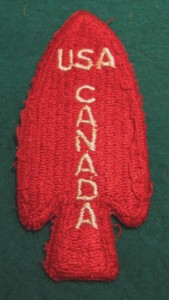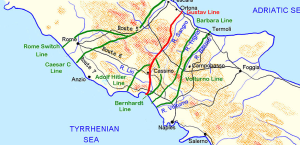Today (February 03, 2015), in Washington DC, Congress awarded a Gold Medal to members of the World War II era 1st Special Service Force, otherwise known as the Devil’s Brigade. The Congressional Gold Medal is awarded to persons “who have performed an achievement that has an impact on American history and culture that is likely to be recognized as a major achievement in the recipient’s field long after the achievement”. The Medal can be awarded to both citizens and non-citizens of the US.
This combat unit of Americans and Canadians, pulled together under a unified joint command fought in the Aleutian Islands, Italy and southern France. Their history is quite unique and interesting.
All the special forces that exist today in the Canadian and US military can trace their lineage back to the time when the 1st SSF was formed. At the start of World War II, the British foresaw a need for fast hard-hitting highly trained commandos. A whole series of units were formed from elite forces and usually lead by officers who themselves had a vision on how to attack the enemy as hard as possible in a time when resources were scarce. The first groups to be formed were a series of Commando Units in the British Forces whose job it was to undertake raids into French coastal towns that had fallen under German control. From the success of the Commando units, came the Special Air Service (SAS) which initially was tasked with operating behind the lines in occupied North Africa. In 1940, the British also formed the Special Boat Service (SBS) which initially saw action in the Mediterranean.
When France fell to the Germans in the spring of 1940, Winston Churchill is famously quoted as saying that British Forces, both military and clandestine, would “set the Continent on fire”. He envisioned that all of these special forces groups would lead the way. Perhaps their most famous raid came in March of 1942 when commandos filled the old HMS Campbeltown (provided by the US under Lend-Lease and originally named USS Buchanan) with delayed action explosives and rammed it into the huge dry dock gates at St. Nazaire on the French coast. St. Nazaire was not only a large U-Boat base but also had the largest dry-dock on the continent, something the Germans would find useful for repairing their large battleships like the Turpitz or Prinz Eugen. Of the raiding force of over 600 men, only 228 returned safely to England. Around 170 were killed and 200 more were taken prisoner. But a few hours after their ammunition ran out and the attackers were forced to surrender, the Campbeltown blew up killing more than 300 Germans and knocking out the dry dock for the duration of the war. Nearly 100 military decorations were awarded to the men who took part in the raid including five Victoria Crosses.
With the US entry into the war at the end of 1941, the US military began to develop its own special forces. General Lucian Truscott, with assistance from the British General Staff, proposed the formation of an American Unit along the lines of the British Commandos. In May of 1942, Captain William Darby was given command of what became known as Darby’s Rangers. These Rangers trained in Scotland alongside the British Commando units and became the first US ground forces in combat in Europe. Forty-four enlisted men and 5 officers were dispersed among the 5000 Canadians and 1000 British soldiers that attacked Dieppe on 19 August 1942. Despite the terrible cost of the raid, the raiders returned to England with parts from a German radar station and other intelligence. There is some speculation that Ian Fleming may also have been involved in the planning of the raid as part of an effort to grab a new German 4-rotor Enigma machine which was then coming into service. The extra rotor in the Enigma complicated the efforts of the British code breakers at Bletchley Park. Suddenly the cryptologists were to be unable to crack the codes. Therefore getting their hands on a 4-rotor Enigma was a high priority. History now shows that Bletchley was unable to crack the 4-rotor design until December of 1944 thus making it unlikely that they were able to grab one in Dieppe in August.
The cost of the Dieppe raid was staggering to the allies. Of the 5000 Canadians who attacked that day, 3367 were killed, wounded or taken prisoner. Of the 1000 British Commandos, nearly 250 were lost. The Royal Navy lost a destroyer and 33 landing craft with over 500 dead and wounded. The RAF lost 106 planes while the Luftwaffe only lost 48. The German Army suffered under 600 casualties. Three Victoria Crosses were award for the operation including one to Reverend John Foote, a padre in the Royal Hamilton Light Infantry. Another went to Colonel Charles Merritt of the South Saskatchewan Regiment. Merritt was taken prisoner at Dieppe and subsequently sent to a POW camp in Bavaria. He, along with 64 others escaped the camp through a 120 ft tunnel in June of 1943. He was recaptured soon afterwards but his other escape attempts eventually landed him Colditz Castle, a POW camp to which the Germans sent a great number of allied soldiers who were classified as “escape artists”.
Encouraged by the results of the British Commandos, General George Marshall agreed to form a US version. Their initial project was to land a force in the Norwegian mountains and create a base of operations there from which to harass the Germans who were occupying Norway. The plans were moved along even to the point of asking the US car company Studebaker to design and build a cargo carrier for use in the deep Norwegian snow. Studebaker completed the design of the M29 Weasel which was to be deployed as part of the project.
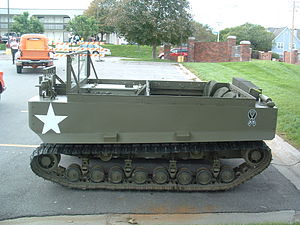
Eisenhower and Marshall badly wanted to put US forces into action against the Germans and pressed for the Norwegian operation to move forward. But a lot of logistical problems existed. The primary problem was that the troops would need to be dropped by parachute into Norway and the planes to do this simply did not exist. Furthermore, all resupply would need to come from the air and again, the planes were simply unavailable at this point in the war. Col. Robert Frederick, the officer working on the plans eventually realized that all the goals of the operation could be achieved by simply bombing the Norwegian targets, thereby avoiding the need for the Norwegian base in the first place. But the planning for the mission got Marshall and Eisenhower thinking of a need for trained troops who could fight in the snow.
In July of 1942, Canada’s Minister of Defense, James Ralston, signed off on a plan which envisioned a joint command of both American and Canadian officers. The goal was to train the troops to become experts in fighting in winter conditions. Ralston agreed to send nearly 700 men including officers to train alongside an equal number of Americans and as many Norwegians as they could locate and entice to join. In the end, the scarcity of Norwegians resulted in the force being half American and half Canadian. The combined unit would train at Fort William Henry Harrison in Helena, Montana. The force was made up of 3 regiments, each with a Lt. Colonel in command and 32 offices with 385 men. Each regiment had 2 battalions. Each battalion had 3 companies and each company had 3 platoons.
The men were highly trained at the insistence of Frederick in night fighting techniques and close hand to hand combat. He insisted that they be trained in the use of explosives for demolition, for amphibious warfare, rock climbing, mountain warfare and as ski troops. Part of their conditioning included 60 mile marches which one battalion managed to complete in just under 20 hours.
Hand to hand combat training was stressed to the point that each man was issued a specially designed combat knife. A Canadian, Patrick O’Neill, who already had become an expert in dispatching the enemy with a knife was assigned to teach these skills to the entire unit.
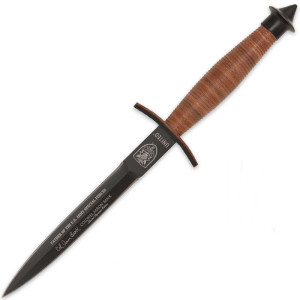
Frederick himself designed the blade of this knife with the idea that his men could use it to silently eliminate the enemy during a night operation.
The unit patch was a red arrowhead with USA written horizontally and Canada written vertically.
After training for an entire year, the 1st SSF was deployed to the Aleutians in August of 1943 as part of the task force that was to retake the island of Kiska which had been occupied by the Japanese during the Battle of Midway in June of 1942. Upon arrival, the invasion force found that the Japanese had voluntarily evacuated Kiska and the island was retaken without a shot fired.
With the cancellation of the planned insertion of the 1st SSF into Norway, the unit found itself without a mission until General Mark Clark came into the picture. Clark was in command of the US troops fighting in Italy and he was desperately short of combat troops. By the summer of 1943, most US troops were either earmarked for use in the upcoming cross-channel landings scheduled for 1944 or were being sent to the Pacific. The Italian campaign was being run on a shoestring and Clark found himself fighting a tough, well entrenched German foe that was using the mountains in Italy with great skill to impede his advance. The 1st SSF with their mountain training were a perfect fit for Italy.
In November of 1943, the 1st SSF arrived in Naples and was immediately sent to the front lines. Clark’s opposition in Italy was General Albert Kesselring. Kesselring’s defense plan for Italy consisted of a series of fortified lines through the mountains, each designed to thwart the Allied forces efforts to move north towards Rome. His troops were dug into the tops of the mountains and each position was able to provide defensive fire for the adjacent position. Clark was hopelessly outmatched by Kesselring and the fight north for the allies was a series of one disastrous engagement after another.
By the time the 1st SSF arrived in the scene, the allies had finally broken through to the Bernhardt line.
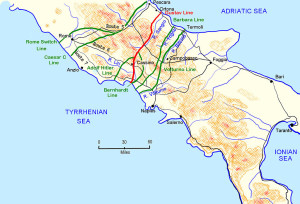
As part of this defense line, 10 miles SE of Cassino stood Monte la Difensa. The Germans on the top of the mountain left the backside of the mountain undefended as they thought that the sheer clif face was too steep to climb. But on the night of 3 December 1943, the men of the 1st SSF scaled the cliff with all their equipment and attacked the Germans at dawn, pushing them off the mountain top before noon. Over the next 3 days, the 1st SSF would encounter massive counter attacks from Kesselring’s artillery and infantry located on nearby mountain tops. By the time it was over, the 1st SSF had suffered nearly 75% casualties but they not only secured Monte la Difensa but also the neighboring La Remetanea. Taking these positions forced the Germans back to the next line of defense, the Gustav Line. This line included the heavily defended and soon to be infamous, Monte Cassino. The Gustav Line would hold for nearly 6 months during which time the 1st SSF would become involved in the allied landings at Anzio.
To get around the defenses of the Gustav line, Clark proposed a sea invasion some 20 miles behind the Gustav line at Anzio. On 22 January 1944 the allies landed with little German opposition. But the American commander Gen. Lucas hesitated and dug in around the beachhead instead of charging forward into Kesselring’s rear area. A furious Winston Churchill remarked, “I thought we were going to get Blitzkreig…. Instead, we got Sitzkreig”. Failing to advance gave Kesselring the opportunity to reorient his forces and it wasn’t long before the beachhead was surrounded by crack German troops including massive amounts of artillery and tanks. It was into this mess that, on February 1, 1944, the 1st SSF landed at Anzio to replace the 1st and 3rd Ranger battalions on the front line. They were positioned along the right flank of the Anzio beachhead along the Mussolini Canal.
Frequently going on patrol at night across the canal on the German side, the men of the 1st SSF had a nasty habit of completely covering their exposed skin with black boot polish. Using their V-42 combat knives, the men of the 1st SSF caused so many casualties on the German side that Kesselring had to pull back his units from the German side of the canal to keep his troops from “disappearing” at night. It was at Anzio that the Germans began calling 1st SSF “the Black Devils”. The diary of a dead German soldier included the following:
“The black devils (Die Schwarzen Teufel) are all around us every time we come into the line”
To further terrorize the Germans during their night patrols, the 1st SSF took stickers bearing their arrowhead emblom patch and left them on dead German corpses and on walls all over the German rear areas.
When the allies finally broke out of the Anzio beachhead on 25 May, 1944, the 1st SSF headed immediately towards Rome where they were the among the first to enter the city on June 4.
As a footnote, heading to Rome from Anzio was an incredibly stupid strategic mistake by Clark. He should have headed straight east across Italy so as to cut off the retreating Germans who were south of Anzio still manning the Gustav Line. Had he done so, he might well have captured nearly 200,000 crack German troops. Instead he headed to Rome which allowed the Germans to retreat north in an orderly fashion. They then reformed along a new line north of Rome and forced the Allied Armies to again and again bash their heads against the dug in German mountain defenses. Clark was never able to push Kesselring out of Italy for the duration of the war.
In August of 1944, the 1st FFS moved to southern France to join the armies heading north from Marseille. By September, they moved into positions along the French – Italian border but by then, the unit had seen its last major combat.
The unit was disbanded in December of 1944 and the men sent back to their respective armies. While in existence, the 1800 man unit accounted for nearly 12,000 German casualties, 7,000 prisoners while they themselves suffered more than 600% casualties. This meant that nearly 11,000 men fought in the 1st SSF in under 18 months of fighting.
In 1968, a move was made about the Devil’s Brigade starring William Holden as Col. Frederick and Cliff Robertson as Maj. Alan Crown, the Executive Officer of the unit and the commander of the Canadians. The focal point of the movie was the battle at Monte La Difensa.
In 2000, the History Channel made a series called “Dangerous Missions”. One of the episodes in the series was named “Black Devils”. The documentary recreates the battle at Monte La Difensa in great detail.
